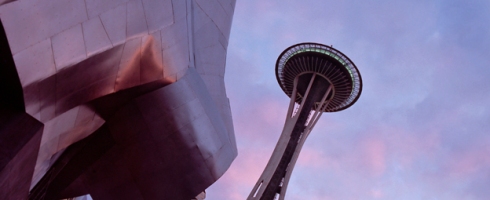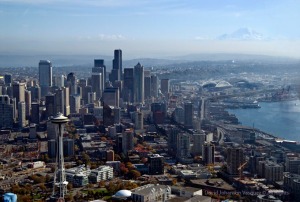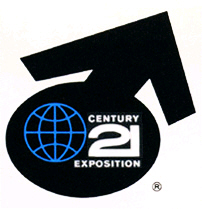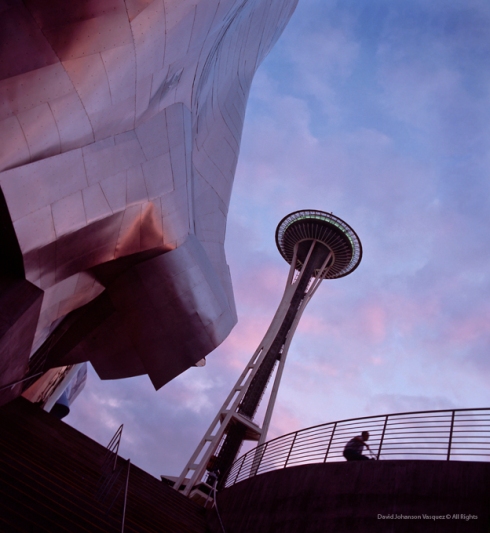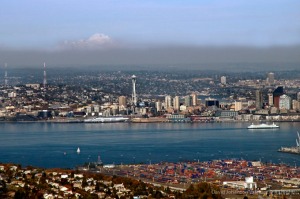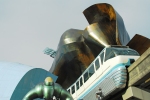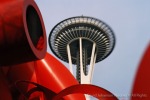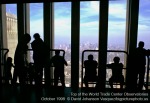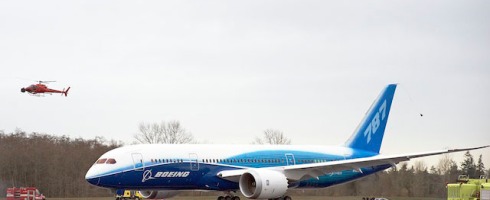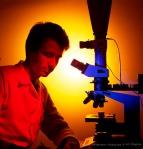Multimedia eLearning essay by: David Johanson Vasquez © All Rights – Third Edition
Content includes: Blended learning, critical think, Seattle Postmodern History, (Video Links – MGM film segments with Elvis Presley at Seattle’s World Fair, postmodern video of early NASA rocket launches & spacewalks, video defining “postmodernism”) (Web links, history org feature of Century 21 Seattle’s World’s Fair & Architect Japanese American Minoru Yamasaki)
On this day, April 21st, 1962, Seattle’s Century 21 World’s Fair opened the doors for its national and international visitors. Eventually, almost 10 million guests would attend the entire event to—imagine a futuristic tomorrow, which promised technological wonders for improved living and for promoting world harmony.
In the previous century’s, 1851 London World’s Fair, taking place at the Crystal Palace, it was a first of its kind event . The industrial age was in a mature stage of development, offering new forms of emerging technologies. In this era, people became aware of time speeding-up, caused by steam-powered’s ability to hasten the speed of long-distance travel with locomotives and steamships. The dimensions of time and space were being reduced by these transportation developments… which brought distant nations and cultures together, allowing for— the creation of World’s fairs for promoting industrial development and international exhibits. Seattle’s first World’s fair, the Alaska Yukon Pacific Exposition, in 1909, took place near the peak of the modern industrial age.
Significantly, the Century 21 World’s Fair was successful with a number of tangible results— it was one of the few world’s fairs, which made a profit and most importantly, it lifted Seattle out of its perceived provincial setting, while placing it on a world stage. The timing was ideal for the city’s economic and development trajectory. With Boeing Aerospace as a prime Seattle-based company, it benefited from the international exposure, right when the postmodern world began embracing jet travel for enhanced global access.
Optimism and enthusiasm associated with the 1962 Worlds Fair was authentic, however, in the big picture, a dark shadow was growing in super-power tension as the cold war thermometer was reaching a boiling point. President Kennedy’s excuse of having a cold for not attending the Century 21 closing ceremony in October was a ruse, actually his efforts for de-escalating the Cuban Missile Crisis were urgently required. As a result of averting a nuclear war over Cuba, President Kennedy successfully presided over the United States, United Kingdom and Soviet Union’s signing the Comprehensive Nuclear Test Ban Treaty (CTBT) in the following year of 1963.
Ironically, it was the Soviet Union, which created the theme of “science” for Seattle’s Century 21 Worlds Fair. On October 4, 1957 the Russians launched Sputnik, the first orbiting satellite, which gave them an edge in space development. With the Soviet’s apparent satellite success, Americans feared they were falling behind in science and technology; as a result, the theme of “science” became the framework for Seattle’s Worlds Fair. From this time forward, the U.S. set goals to be leaders in space exploration and development.
The shock-wave effect created by Sputnik, awoke America from its idealistic complacency of the 1950’s. Now a sense of urgency was created in looking for optimism within future technology of tomorrow. This quest for all things technological— was the fuel which Seattle used for launching its World’s Fair. Late in 1957, the title: Seattle Century 21 World’s Fair was selected as the brand name—to help promote America’s vision of optimism for a technological future. To champion this cause, Albert Rossellini, Washington State Governor from 1956 to 1965— selected an exceptional group of business and civic leaders for a commission, which successfully acquired financing for the World’s Fair.
Governor Rossellini, a Pacific Northwest civic titan, had a vision, which helped develop the region into a world-class economic dynamo. The World’s Fair, along with a modern transportation infrastructure, and post secondary education developments are just a few examples of the legacy Rossellini created. One more fascinating contribution from Governor Rossellini was his success at bringing the of “King of Rock and Roll” to Seattle’s World Fair.
Albert Rossellini pitched the idea to MGM, for making a movie with Elvis Presley (click on the video link →) It Happened at the World’s Fair — (Movie Clip) Happy Ending Enlisting Elvis, a mega superstar, to help promote the Fair in a movie was a brilliant marketing move, with true creative vision!
Most impressive icons of the Century 21 Fair are the Space Needle and Monorail, both went on to become revered Seattle landmarks and preferred tourist attractions. Internationally, the Space Needle is more recognizable as a reference to Seattle, than the city’s actual spoken name.
The Inspiration for the “Space Tower” as it was initially called, came from a napkin sketch by C21 chairman, Eddie Carlson. The chairman was motivated by his visit to a 400’ TV tower, complete with an observation deck and restaurant in Stuttgart, Germany. The idea of a tower with a “flying-saucer” shaped restaurant at the top, was presented to architect John Graham, who added the concept of a rotating restaurant to allow viewers a continuous change of panoramic views. Victor Steinbrueck, professor of architecture at the University of Washington and architect John Ridley produced concept sketches which featured an elegant tripod, crowned with a saucer structure, observation deck.
Minoru Yamasaki, a first-generation, Japanese American, born in Seattle, was the lead architect— along with Seattle’s NBBJ Architects chosen for designing the U.S. Science Pavilion, today’s Pacific Science Center.

Originally titled the U.S. Science Center, now the Pacific Science Center, was designed by architect Minoru Yamasaki, using his “Gothic Modernism” style.
Yamasaki’s innovative, graceful style was also used in Seattle’s most daring piece of architecture, the Rainier Tower— supported by a gravity defying inverted pedestal!
Another of Minoru’s Emerald City designs is the IBM Building, used as a model for the New York City twin tower design (destroyed in the 9/11, 2001 terrorist attacks.)

Seattle IBM Building designed by Minoru Yamasaki, was used as the model for NYC WTC Twin Towers. An example of Yamasaki’s “gothic modernism” style.
The Pacific Science and NYC twin towers architectural style is “gothic modernism,“ which is a signature feature found in most of Minoru’s designs (please see examples of gothic modernism elements in the photographs below.)
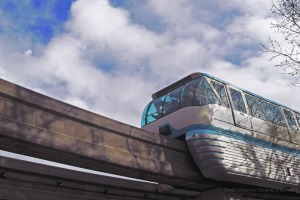
The futuristic Century 21 Monorail, gracefully gliding above the busy streets of Seattle. One of the City’s most popular tourist attractions.
During the summer of the World’s Fair opening, my parents took me to experience the exposition. Although I was very young while attending, the images and feelings of wonder from seeing the futuristic architecture and exhibits are still with me. The theme of life in the 21st century, awoke my imagination and interest in science technology at an early age, which still continues to this day. ~
A must see postmodern era video featuring the beginnings of the space race. Click on link below. ↓
http://www.youtube.com/watch?v=rfVfRWv7igg
What is postmodernism video (click on video link below ↓)
http://www.youtube.com/watch?v=oL8MhYq9owo
HistoryLink to Century 21 — The 1962 Seattle World’s Fair, Part 1 ( Click on link below ↓)
http://www.historylink.org/index.cfm?DisplayPage=output.cfm&File_Id=2290
Links to Seattle Architect Minoru Yamasaki ↓
http://en.wikipedia.org/wiki/Minoru_Yamasaki
http://www.time.com/time/covers/0,16641,19630118,00.html
What can be more important than reaching for excellence in education, still not sure? Read what one of the greatest storytellers of our time is saying about the importance of education. Iconic filmmaker, George Lucas is true to his word regarding support for education. Please read what he wrote this week in his Eductopia.org. Site, regarding the importance of teaching. My written response to Mr. Lucas’s article is how I use web-based multimedia experiences to share passion for learning. I wonder if GL took a look at what I had to say? http://www.edutopia.org/blog/importance-of-education-george-lucas
http://www.edutopia.org/blog/importance-of-education-george-lucas
[contact-form] [contact-field label="Name" type="name" required="true"/] [contact-field label="Email" type="email" required="true"/] [contact-field label="Website" type="url"/] [contact-field label="Comment" class="GINGER_SOFATWARE_noSuggestion GINGER_SOFATWARE_correct">textarea</span>" required="true"/] [/contact-form]

